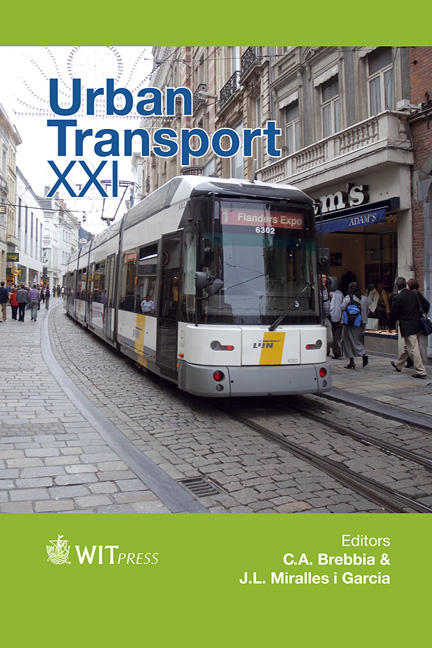Analysis Of The Mobility Of Railway Passenger Transport In Small Urban Areas
Price
Free (open access)
Transaction
Volume
146
Pages
10
Page Range
665 - 674
Published
2015
Size
516 kb
Paper DOI
10.2495/UT150541
Copyright
WIT Press
Author(s)
B. Abramović
Abstract
In the organization of city traffic there is a historical link between the various transport modes, particularly between the road and rail systems (tram, metro and railways). Each particular system operates autonomously and independently of one another, while at locations of mode changing (stops) time integration of various modes into a single integrated system is performed. Rail systems are the backbone of an integrated system because of the capacity and speed they can provide. Railways are particularly interesting because they integrate urban, suburban, regional and intercity traffic. Railways are traditionally monopolistic, but, since 1990, the European Union has implemented legal, organizational, technological and technical measures in order to achieve full liberalization of railway transport. The liberalization of railway transport is particularly successful in freight, while in passenger traffic the change is slower; particularly interesting are the changes in the regional railway traffic in Germany and in intercity traffic in the Czech Republic. How well railways are successfully integrated into urban transport systems can be evaluated in several ways, but the most important method of assessing is by a survey of users – passengers. The whole integrated system is established with the aim of enabling higher levels of mobility for the user – passenger. Today, mobility in cities is a conditio sine que non of the population. Therefore, the public transport system must be evaluated through surveys. This paper analyses the mobility of passengers by railway in the area of the small town of Varaždin (Croatia). In addition to standard questions about the provision of services (demography, the beginning and end point of travel, duration of travel, types of tickets), questions were asked about changing the mode of transport in the last 5 years. This set of questions produces data on how many new passengers came to the railway and what are their reasons for changing their habits.
Keywords
railway, mobility, passengers, survey





